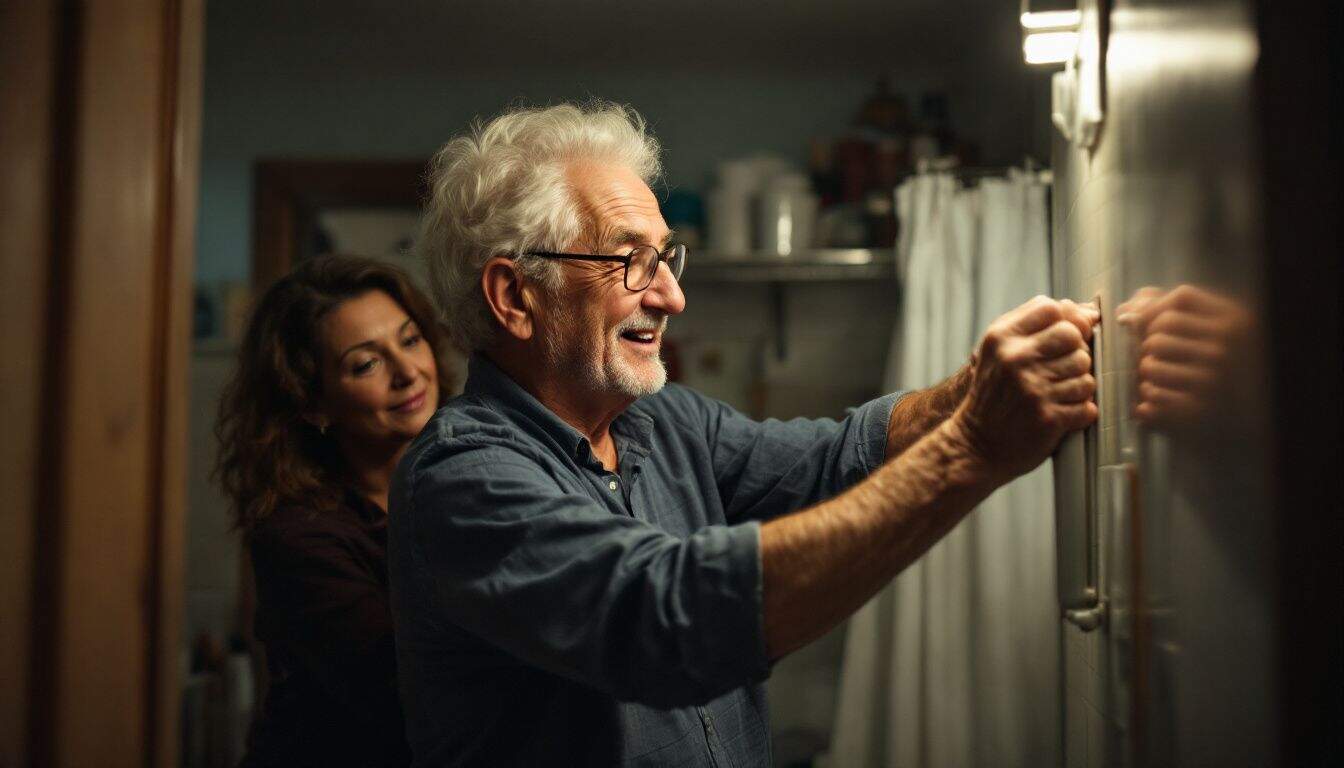Are you worried about keeping the older adults in your family safe at home? Over three-quarters of adults aged 50 and older prefer to age in place, but many homes aren’t set up for senior care.
This guide on how to make a home safer for seniors gives simple tips—like fall prevention strategies—to ease your worries and boost their comfort. Keep reading to learn easy steps that protect loved ones each day.
Key Takeaways
Take away loose rugs and clutter around the home—currently, just 40% of U.S. households are fully safe for seniors to avoid dangerous falls.
Put grab bars in bathrooms and place non-slip mats on floors; basic home safety upgrades like these usually cost under $650 total.
Build ramps to make entry easier, since a mere 5% of homes have them today—federal Section 504 loans can cover some installation costs.
Set up motion-sensor lights in halls and near bathrooms, both to lower fall risks and scare off potential burglars.
Post emergency phone numbers near every phone in your home, and test smoke alarms once a month to guarantee quick help if trouble arises.
Table of Contents
Fall Prevention Strategies
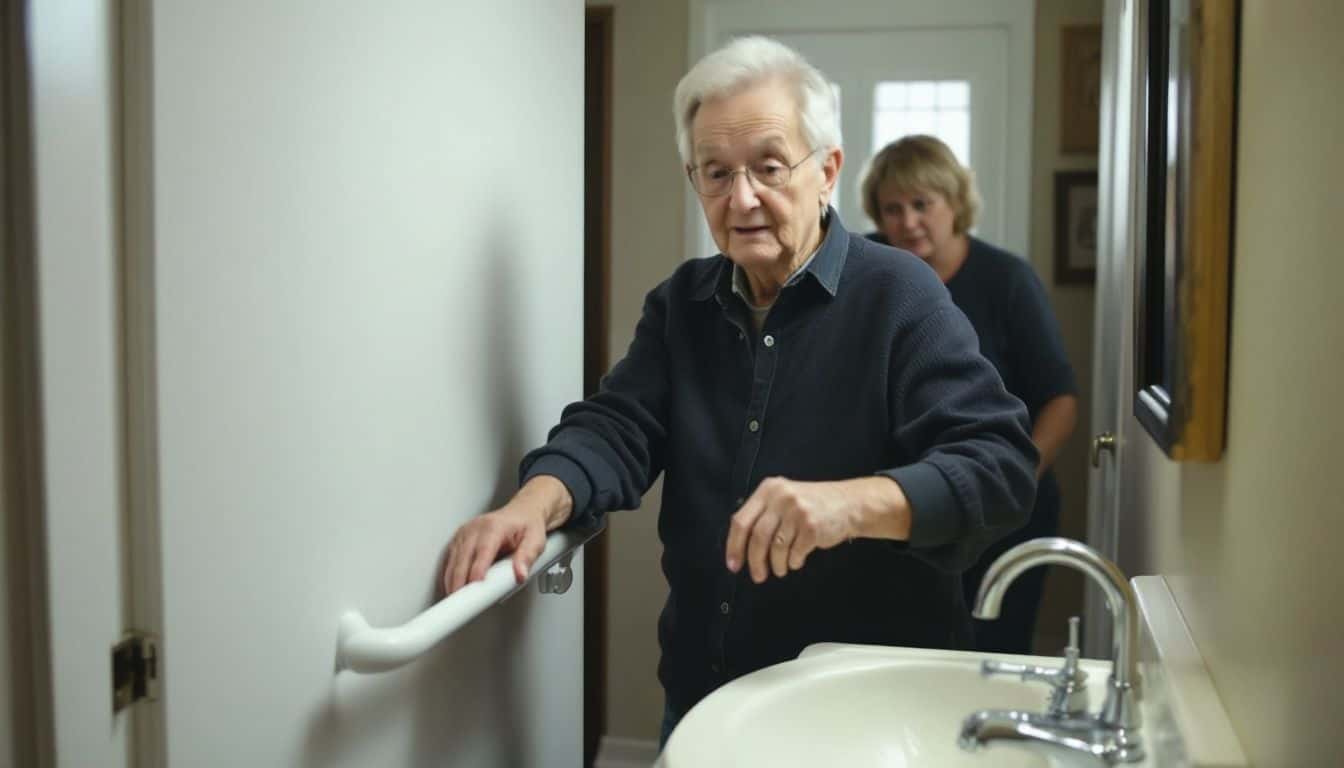
Falls cause major injuries for seniors each year. Simple changes like adding grab bars and removing loose rugs can cut these risks in half.
Remove tripping hazards such as loose rugs
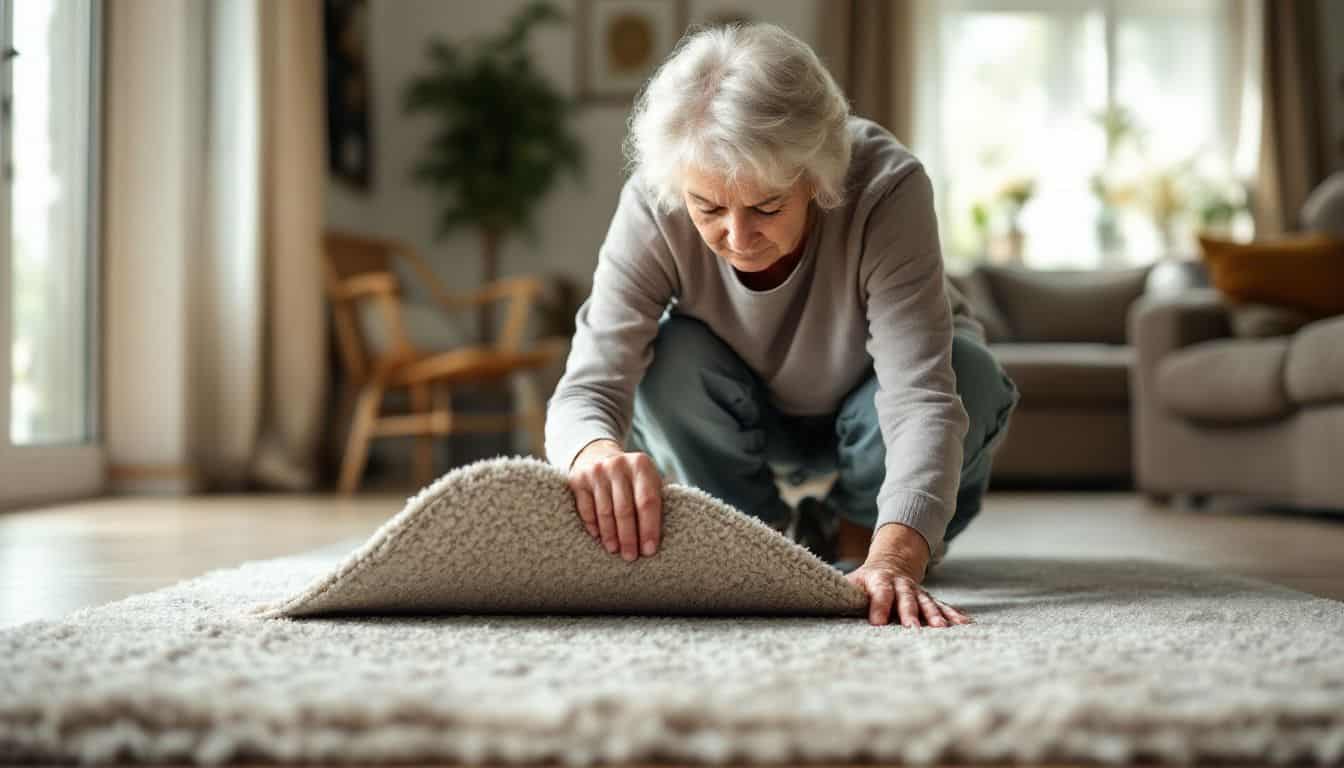
Loose rugs create big dangers for seniors at home—I learned this the hard way after my mom tripped on a bathroom mat last year. Research shows only about 40% of homes in the U.S. are actually safe and prepared for older adults. Installing kitchen chairs with arms for elderly provides essential support during meals and when getting up or sitting down, reducing the risk of falls in one of the home’s most frequently used areas. This simple addition offers both comfort and stability for seniors who may struggle with balance.
Open, clear floor spaces greatly reduce the risk of accidents. Loose rugs, electric wires, and scattered clutter can quickly become hazards that cause seniors to fall and get seriously hurt.
Keep walkways open, clear, and easy to move through. Stick area rugs securely to the floor using double-sided tape or special non-slip pads. If possible, swap thick or shaggy rugs for thin, flat options—or just get rid of them altogether.
The National Institute on Aging recommends placing carpet tape under each corner of every rug in the home. This straightforward solution is affordable, easy to do, and can prevent painful injuries or expensive hospital visits.
Install non-slip mats and grab bars in bathrooms
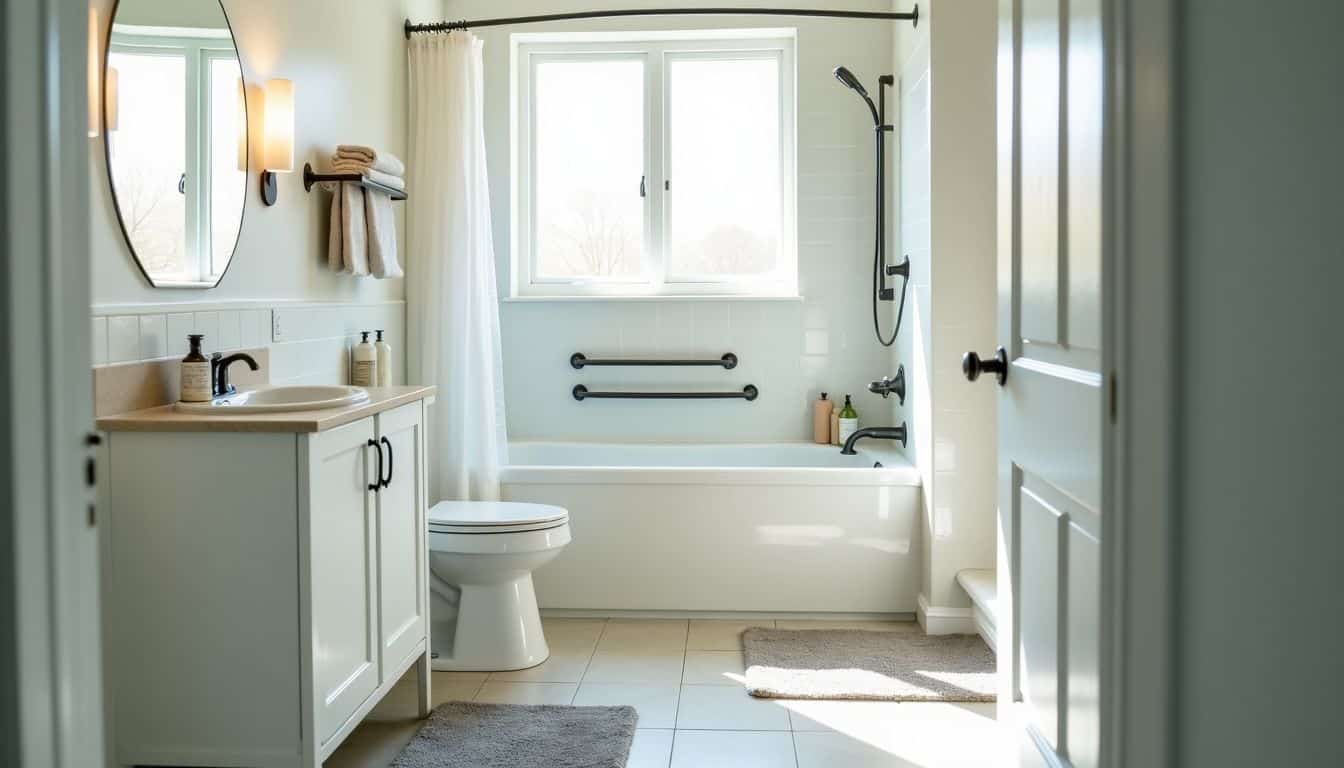
Bathroom safety begins with easy improvements that can greatly reduce risk. Non-slip mats in tubs and showers protect seniors from slipping on wet surfaces. These mats cost far less than the $650 average spent on basic home safety updates.
Installing grab bars near toilets and inside showers provides critical support for seniors going about their daily routines. Many older women share that these bars ease anxiety and boost confidence while using the bathroom.
The bathroom is where independence meets safety concerns for many seniors aging in place.
Area rugs with gripping backing prevent bunching, which stops trips before they happen. Strategically placed bathroom aids help seniors keep their dignity intact, while also greatly reducing fall dangers.
Simple changes like these reassure family members, easing their worries about possible bathroom accidents. Next, we’ll look at ways to boost home accessibility, helping seniors move safely from room to room.
Enhancing Accessibility
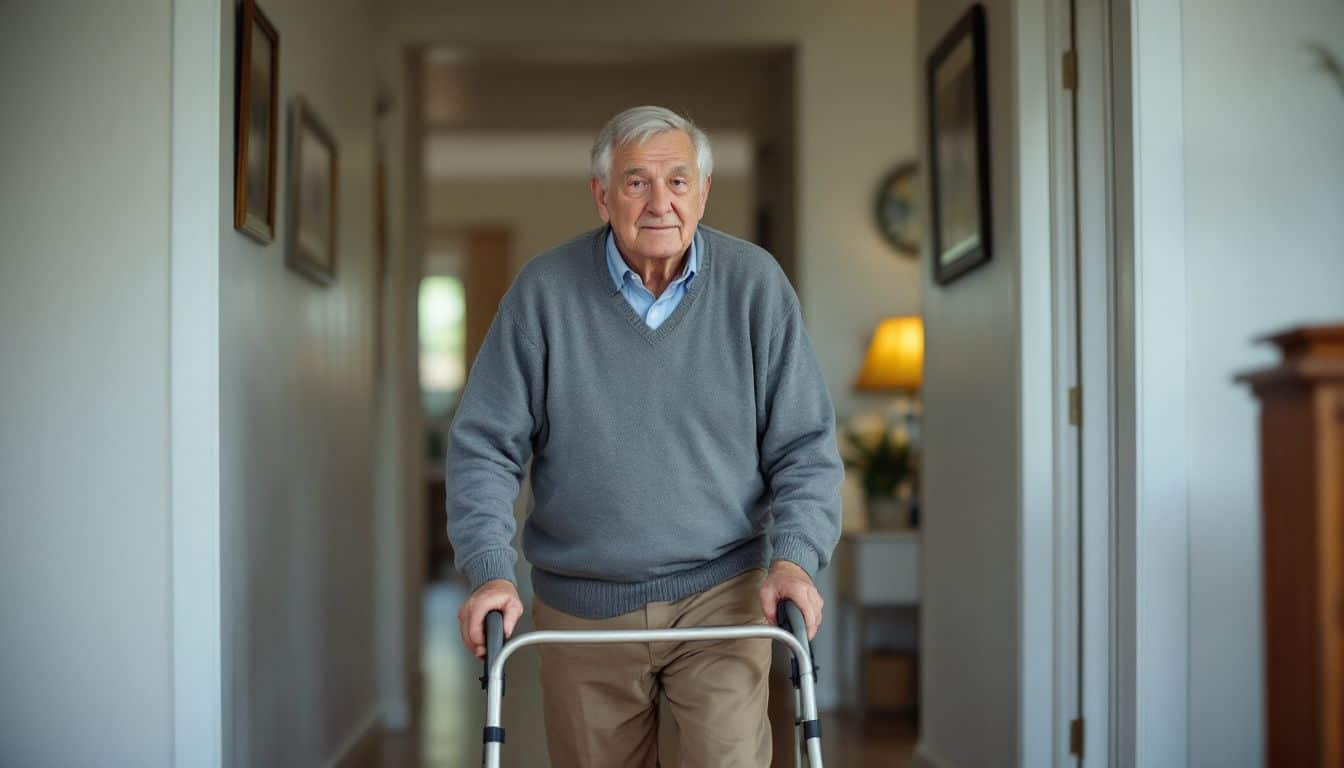
Seniors need clear paths to move around their homes safely. Wider doorways and step-free entrances make using walkers or wheelchairs much easier for daily tasks.
Add ramps for wheelchair access
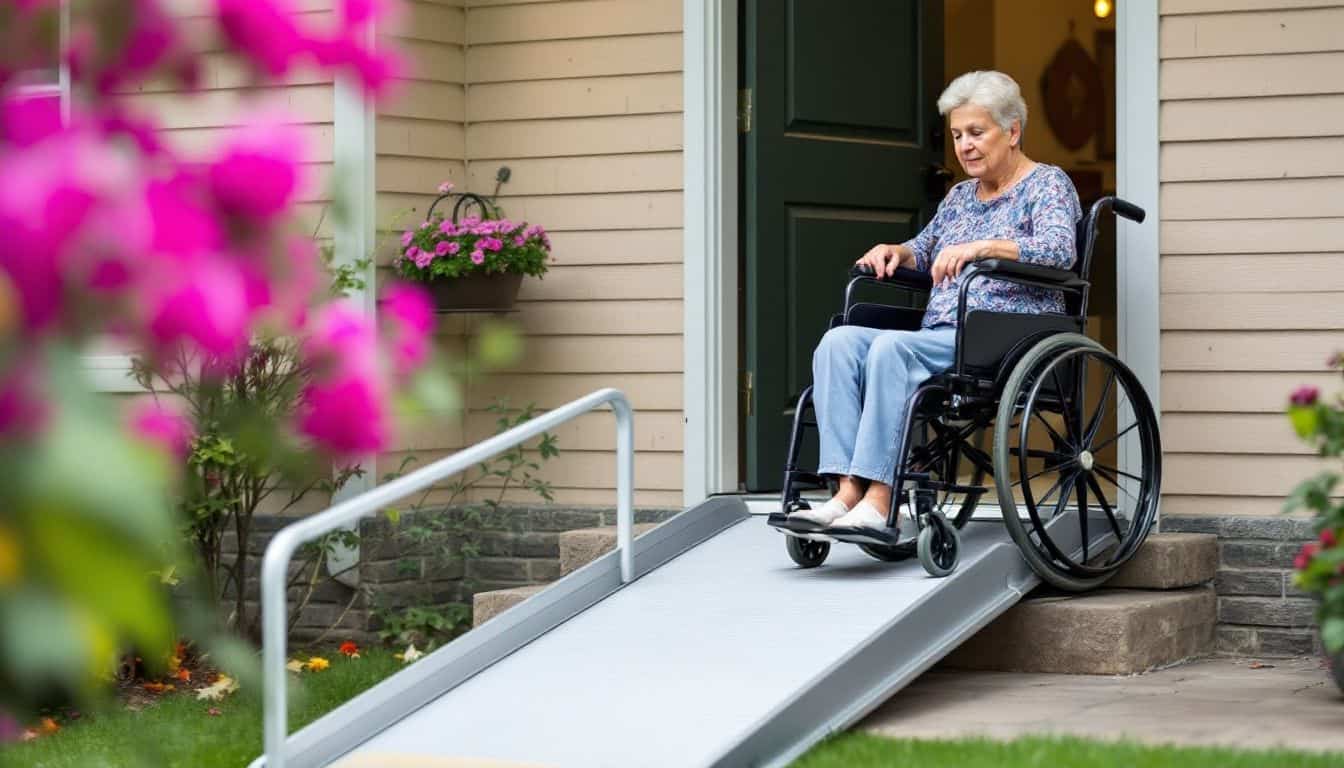
Ramps are life-changing for older adults who use wheelchairs or have trouble climbing stairs. Yet, only about 5% of homes actually have ramps installed. Even a simple ramp makes homes easier to enter and move around in, giving seniors more freedom in their daily activities.
After we added a portable aluminum ramp at my mother-in-law’s front door, she quickly regained much of her independence. Just keep in mind—a gentle slope is safest and easiest for wheelchair users.
Cost doesn’t need to keep people from making this important upgrade. The federal Section 504 program provides low-interest loans to homeowners for improvements, including ramp installations.
This funding supports lower-income households, rural residents, and anyone age 62 or older. AARP.org also has details on other helpful financial resources. Any quality ramp should follow the Americans with Disabilities Act (ADA) guidelines.
ADA-compliant ramps offer step-free entrances, making things easier and safer for the entire household.
Install stairlifts or handrails
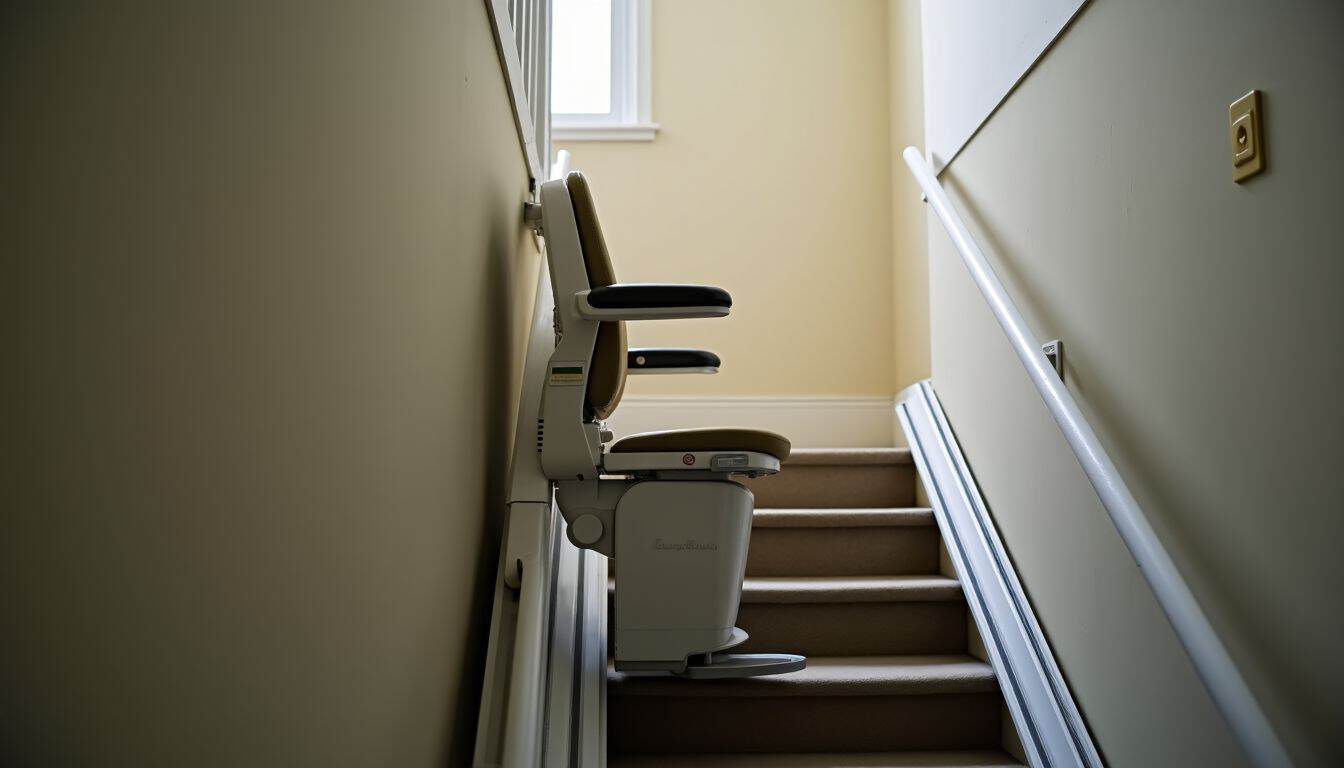
Stairlifts provide a practical, easy solution for seniors who find stairs challenging. Surprisingly, just 1% of homes have them installed—even though they significantly improve everyday life.
Typical prices run between $3,500 and $5,000, and you can order them custom-built for either straight or curved stairs. My mom got hers installed last year; now she comfortably heads upstairs to her bedroom without worries.
Handrails offer important support for seniors who can still climb stairs but want extra safety. According to Dan Bawden, co-creator of the CAPS program, most older houses don’t include these essential safety additions.
Installing sturdy grab bars alongside staircases can help stop serious falls, preventing injuries severe enough to cause hospital stays or even moves into nursing homes. Last month, I put textured handrails in my aunt’s home—now she’s confidently moving from one floor to another, without hesitation.
Improving Lighting and Visibility
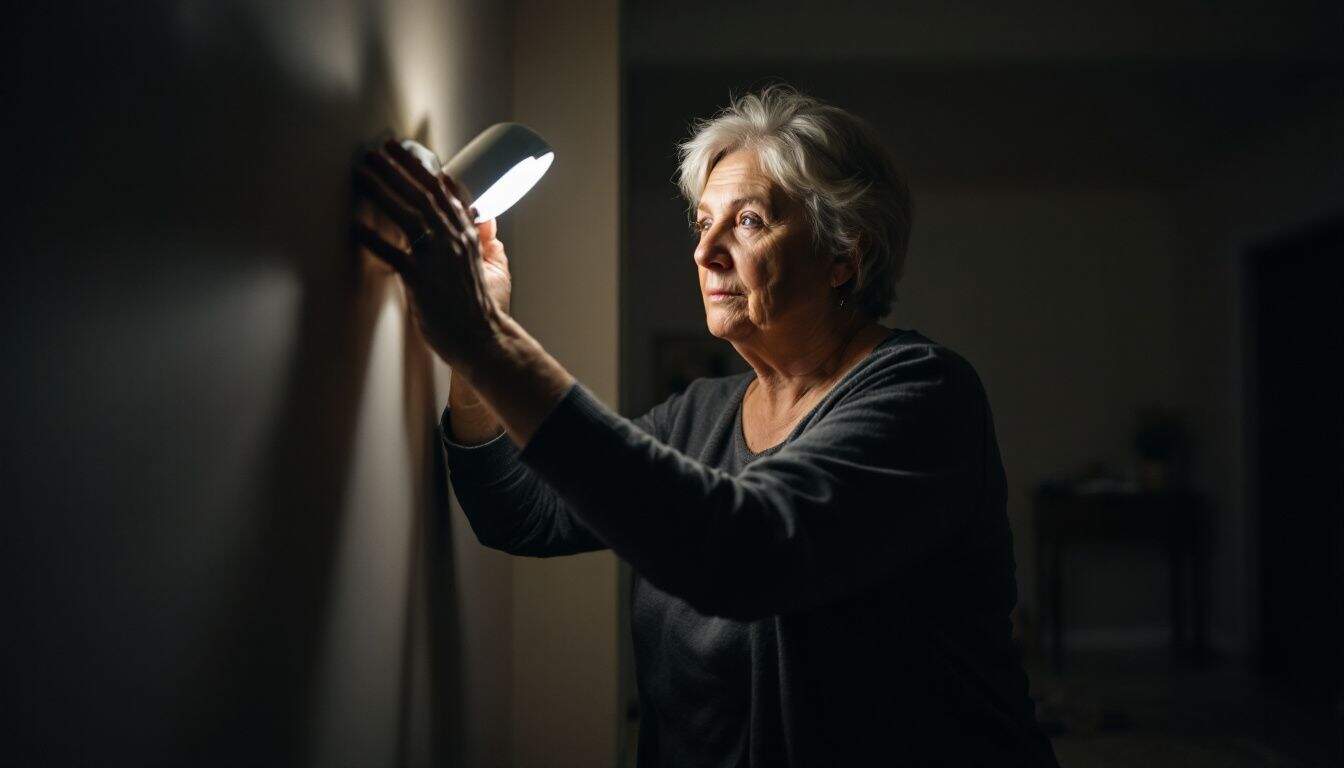
Seniors need good lighting to stay safe at home. Dark spots can hide dangers like loose rugs or small objects that might cause falls.
Use motion-sensor lights
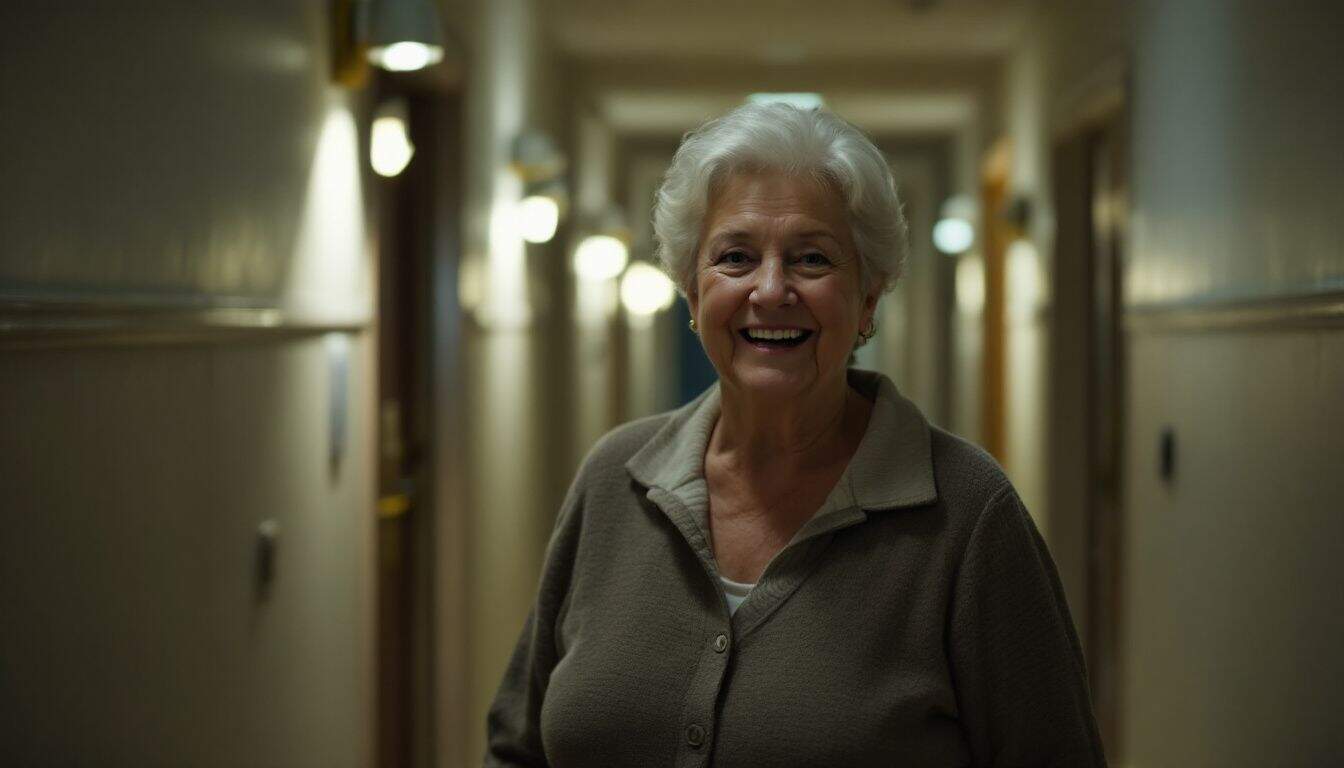
Motion-sensor lights make homes safer and easier to manage for older adults. They automatically turn on whenever someone moves nearby—no more searching around for a switch in a dark room.
You can add them to hallways and stairs, two common spots where people tend to slip or trip. And since these lights switch on whenever there’s movement, they also help deter burglars by giving the impression someone is awake and moving around inside.
Good lighting isn’t just about seeing better—it’s about living better and staying independent longer.
For instance, many women place these motion-activated lights near entry doors to reassure worried family members about Mom or Grandma. The best models even include backup batteries, so they keep lighting the way if power goes out.
For better coverage at night, position lights at each end of hallways and outside bathrooms—places people often go after bedtime. This small upgrade makes homes safer, prevents many falls, and helps older adults feel secure continuing to live at home.
Ensure well-lit hallways and entryways
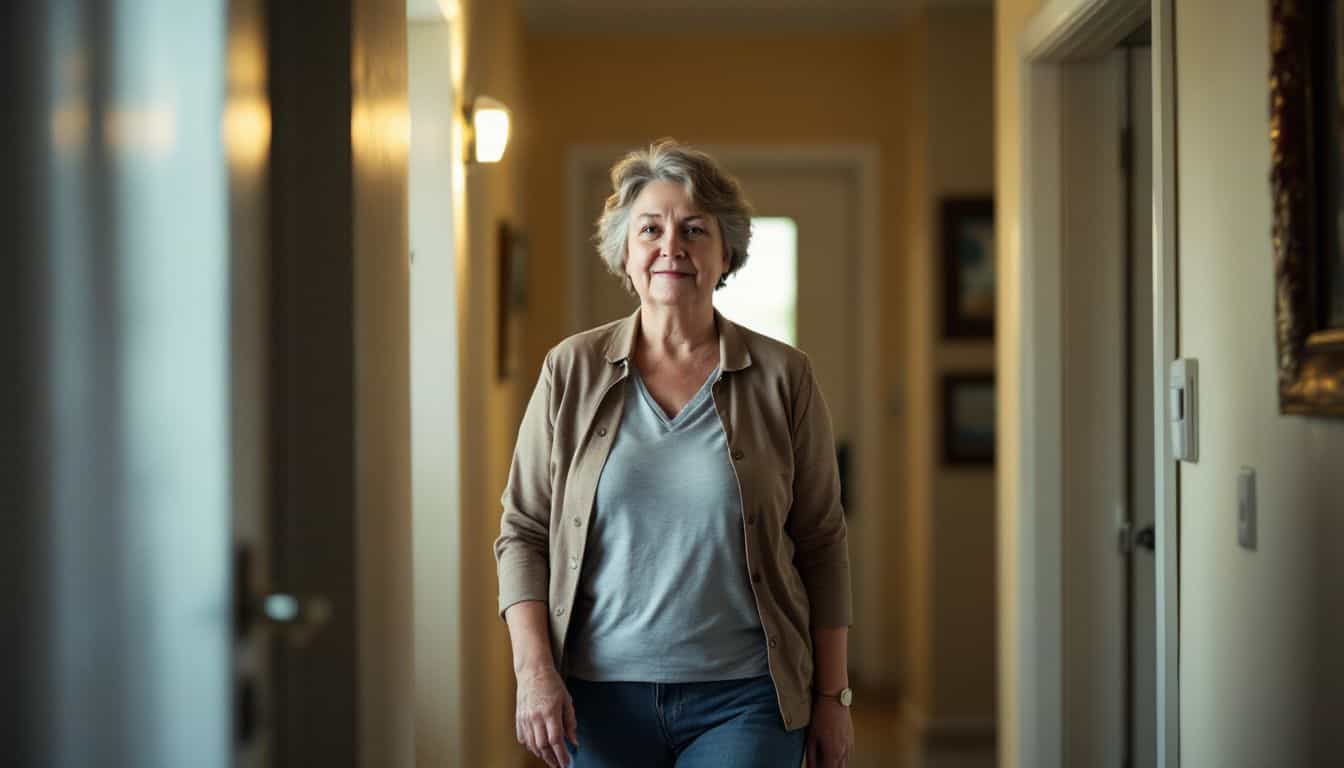
Dark hallways at home can create serious hazards for older adults. Bright lighting reduces falls, making potential trip hazards easier to spot. I saw instant improvement with my mom—once we switched to brighter bulbs in her hallway, she walked with greater confidence.
Entrances and hallways both need plenty of light, cutting down shadows that conceal obstacles. Adjustable lights are ideal, since brightness needs can vary during different times of day.
Many families use hallway lights equipped with motion detection, turning on automatically as someone enters.
Entryways, in particular, deserve careful lighting for both safety and comfort. Front doors should have enough light to clearly show locks, steps, or anything lying on the ground. Proper illumination helps seniors enter and exit their homes safely at all times.
Motion-activated outdoor lights offer an extra benefit by immediately lighting pathways whenever someone approaches the door. Plus, these types of smart lights are energy-efficient, turning on only when someone arrives.
Well-lit spaces provide an easier and safer daily experience for seniors who deal with changes in vision.
Emergency Preparedness
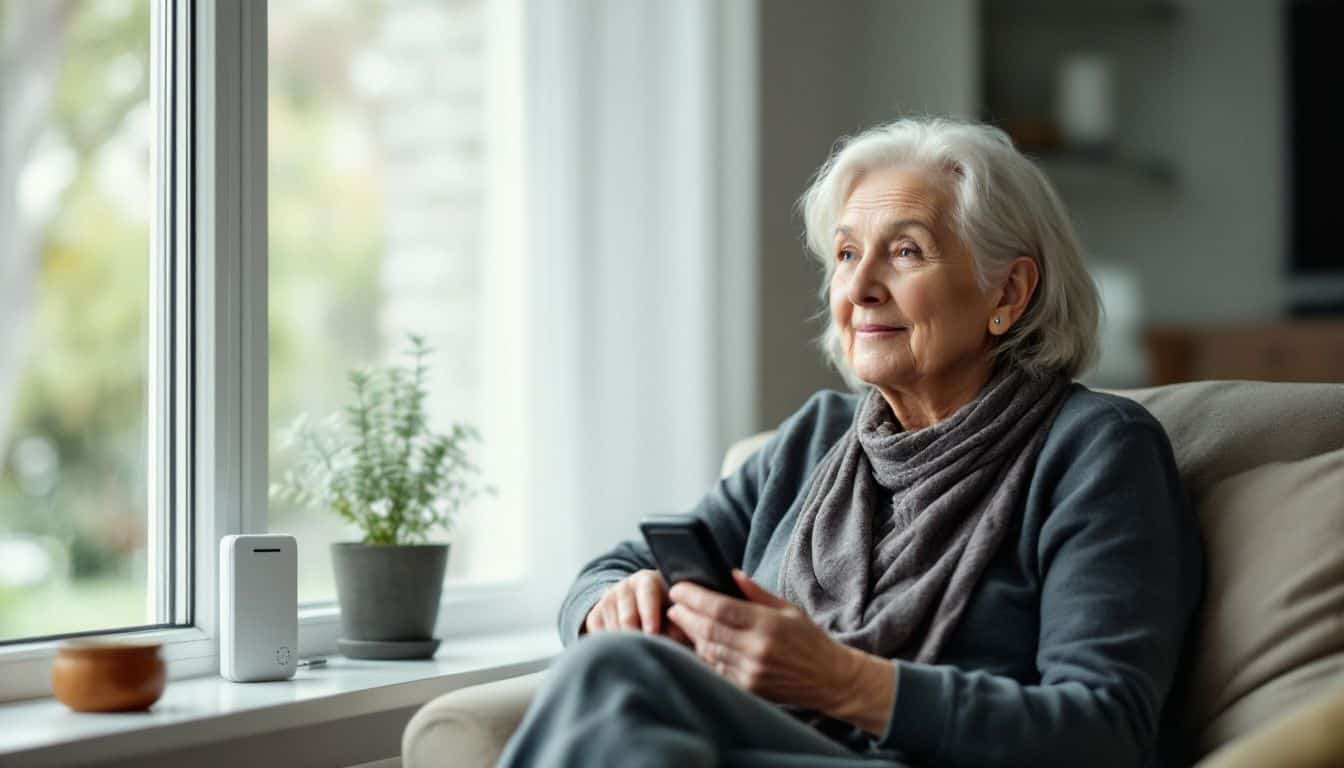
Emergencies can happen without warning, making a solid safety plan vital for seniors. Smart devices like medical alert systems and backup power sources help older adults stay safe during power outages or health scares.
Install smoke detectors and carbon monoxide alarms
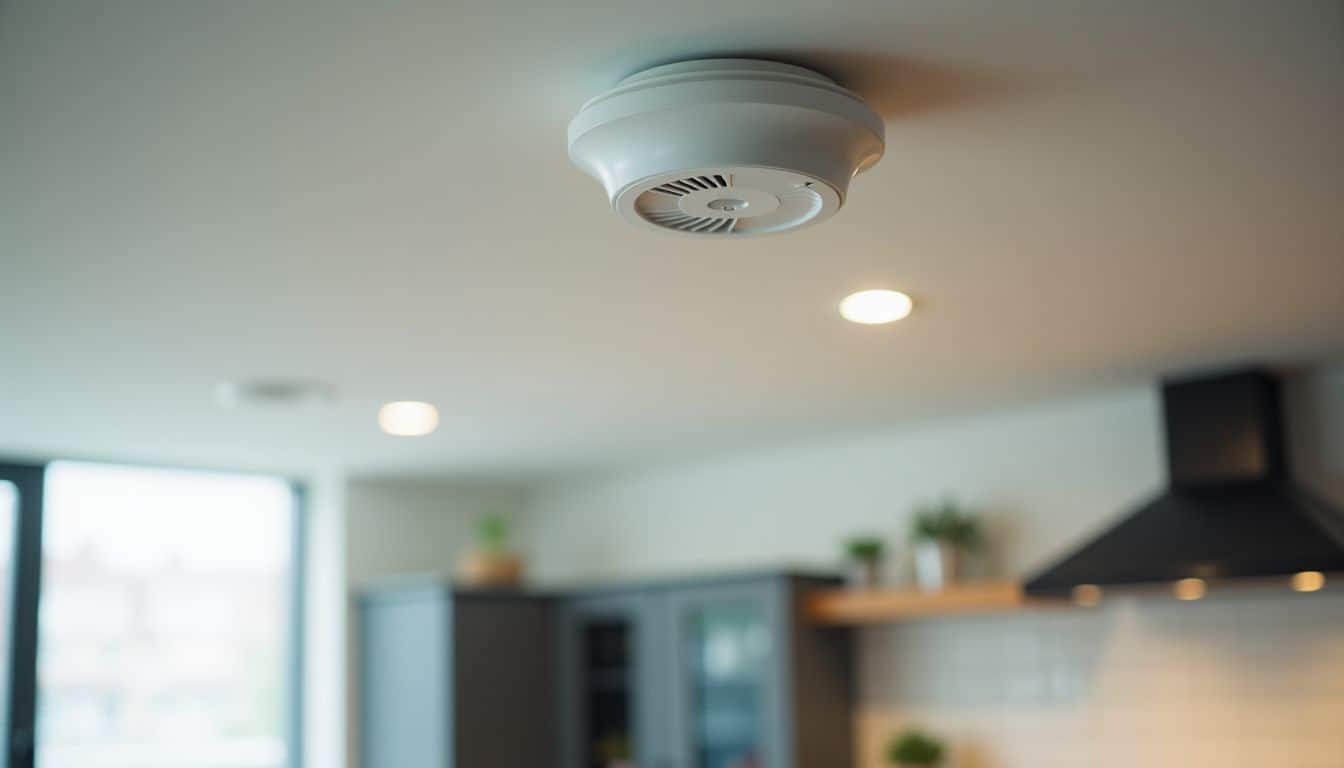
Smoke detectors can protect your family by alerting you quickly if a fire breaks out. Install these alarms in every bedroom, hallway, and close to your kitchen. Carbon monoxide detectors matter too—they warn you about a gas that you can’t see or smell, but can still cause serious harm.
Put these near your smoke alarms so you’re fully covered.
Check all smoke and carbon monoxide alarms once each month. Just press the test button and wait for a loud beep. Keep fire extinguishers nearby, and definitely place one in your kitchen—it’s where fires most commonly start in the home.
Taking these simple precautions creates extra layers of protection. Medicare programs often help seniors pay for home safety equipment, making these important items easier to afford.
Keep a list of emergency contacts near phones
Having quick access to help, beyond just installing smoke detectors, can truly save lives during emergencies. Keep a clear, visible list of essential phone numbers next to every phone in the house.
Write down numbers for family members, caregivers, doctors, and local emergency assistance. My mom, for example, prints her emergency contacts in large letters on bright yellow paper, right next to her bedside phone, making it easy to read even without glasses.
Phone lists are most helpful if everyone on them understands the senior’s specific medical needs. Explain clearly any medical conditions or special care instructions to each contact person.
Also, refresh this contact list every few months to make sure the phone numbers are current. Many older adults find peace of mind knowing they can easily reach someone in a tough situation.
For seniors experiencing memory problems, wearing a medical alert bracelet gives an added sense of security and helps first responders offer proper care.
How Will Home Safety for Seniors Evolve in 2025?
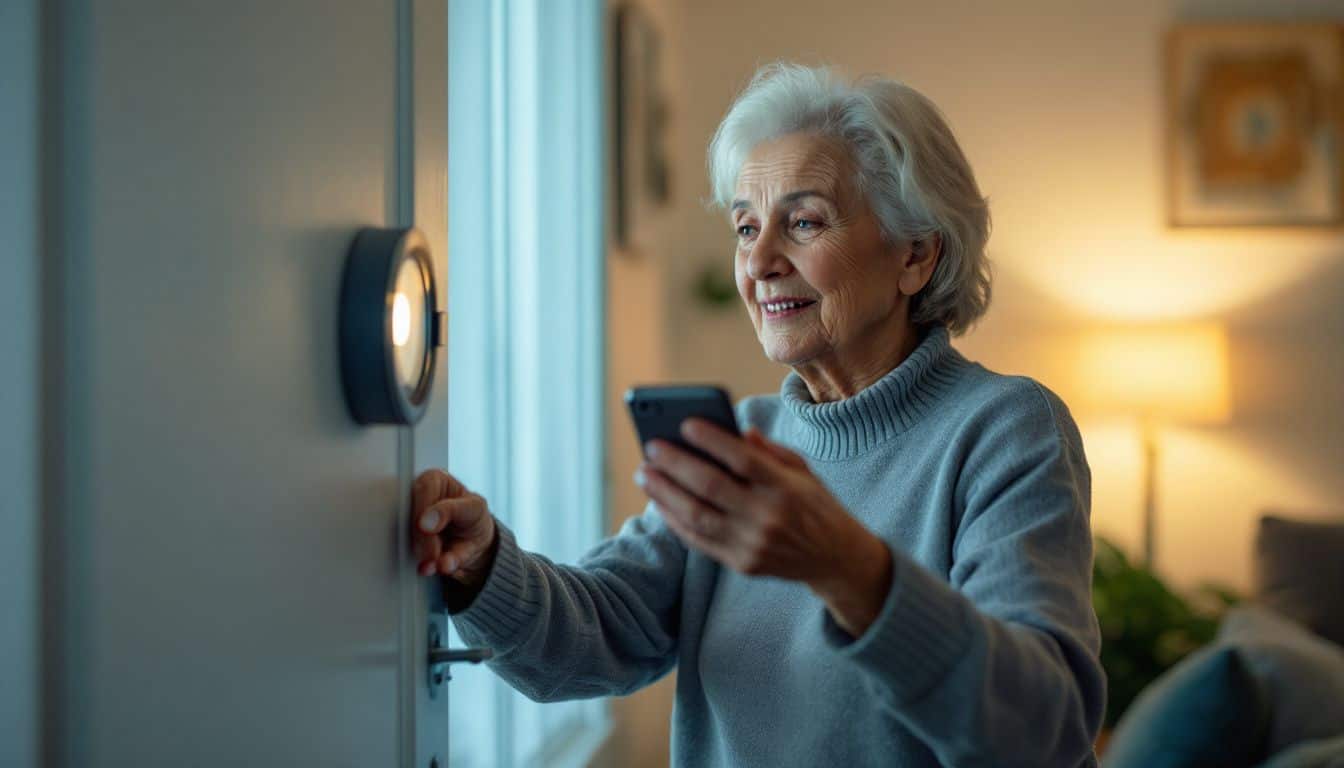
By 2025, technology will completely change home safety for seniors. Smart-home devices with voice-control features will let older adults easily operate lights, thermostats, and doors—all without moving around.
AI-enabled cameras and advanced floor sensors will spot falls quicker than today’s systems, immediately alerting family members or healthcare providers. Tools like these, paired thoughtfully with solutions such as giving money to elderly parents, will create an effective and thorough care environment.
My own mom currently relies on a simple medical alert button, but soon, wearable tech will track location in real-time and monitor vital signs.
Seniors who struggle with memory or movement will greatly benefit from smarter devices that simplify common daily tasks. Motion-activated lights will automatically switch on in bathrooms and hallways, helping reduce nighttime accidents.
Remote monitoring devices will allow family members to discreetly check their loved one’s well-being, maintaining privacy and dignity. The National Institute on Aging backs these innovations, aiming to help seniors remain independent for as long as possible.
Human care won’t disappear because of these technologies—but it will become easier and more efficient, lowering dependence on assisted living centers.
People Also Ask
What are the most important home changes for senior safety?
Key home updates include making a step-free entrance, installing grab bars inside bathrooms, and widening doorways for easy wheelchair use. A walk-in shower with a seat and handheld showerhead also reduces bathroom risks. Good lighting throughout the home, especially on stairs, helps seniors avoid falls. And don’t forget—adjusting the water heater to a safe temperature helps seniors avoid burns.
How can technology make a senior’s home safer?
Medical alert devices and home-monitoring cameras (CCTV) keep a close eye on seniors with Alzheimer’s or other types of dementia. Smart appliances can auto-shutoff stoves, reducing fire risk, and even remind older adults to take their medications. Having a backup generator at home helps seniors stay secure during power outages or storms.
Who can help assess a home for senior safety?
Occupational therapists provide home safety assessments, recommending changes based on a senior’s daily routines—such as bathing, dressing, and cooking. Geriatric care managers also give valuable advice and connect families to services near Lincolnwood, Skokie, and Schaumburg. Plus, the National Institute on Aging offers free home safety checklists to make your task easier.
What bathroom changes help seniors most?
Installing grab bars near toilets and showers helps reduce falls. A walk-in shower with a built-in seat and handheld showerhead lets seniors bathe safely while seated. Ground fault circuit interrupter (GFCI) outlets lower electric shock risk. Non-slip mats and bright lights further reduce bathroom hazards.
How can I make stairs safer for an older adult?
Add sturdy handrails on both sides of the stairs to give seniors stable support. Bright, non-slip tape along each stair edge makes steps easier to spot clearly. Stair lifts also help older adults move between floors safely. Keep stairways clear from clutter and always well-lit.
What services help seniors stay safe at home?
Adult day care programs provide seniors with supervision, social activities, and exercise—while giving caregivers a needed break. Professional home care aides assist with tasks like cleaning, cooking, and personal grooming. Meal delivery services offer nutritious foods directly to seniors at home. Long-term care insurance plans usually help pay for these senior-support services.
References
- https://www.mayoclinic.org/healthy-lifestyle/healthy-aging/in-depth/fall-prevention/art-20047358
- https://www.ncoa.org/article/make-your-home-safe-5-easy-ways-to-avoid-falls-at-home/
- https://www.livewellmobility.com/projects-info/2024/september/the-top-10-ways-to-prevent-falls-at-home/ (2024-09-13)
- https://ezaccess.com/blogs/main-blog/5-ways-a-ramp-can-improve-your-daily-life-at-home?srsltid=AfmBOopVrC2Qe_8VxBY6zn4aZJ1menw-BF1umeLX2w0s04NI9oM4NRcm (2024-12-28)
- https://www.asksamie.com/blogs/how-to-age-in-place/how-to-make-stairs-safer?srsltid=AfmBOoogFw0e3XTjrNtYS622_uaRuZKkDgGCcv-wAzcMK0TN3mBvLVts
- https://www.mcleodcare.com/injury-prevention-home-safety/aging-in-place-making-your-home-safe/
- https://relevar.com/home-safety-checklist-seniors/
- https://cnyelderlaw.com/home-safety-for-aging-in-place-a-guide-for-older-adults/
- https://careathomenow.com/blog/essential-emergency-preparedness-tips-for-seniors/ (2024-09-10)
- https://kingstonhealthcare.com/senior-safety-in-2025-a-guide/
